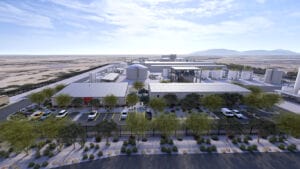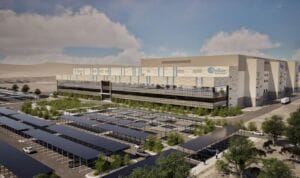If I were asked to describe Arizona’s technology ecosystem in one word today, I would say “resilient.” Despite the pandemic, the leaders of our state have continued to focus on innovation and technology to improve lives. In fact, many Arizona companies have directly impacted the fight against COVID-19. Contributions include building and improving digital tools to help people connect during the lockdown, and shifting production at manufacturing facilities to make masks, ventilators, testing units and more. I couldn’t be prouder of our technology community.
What has been most impressive is the technology sector’s continued growth over the past year. In the Arizona Technology Council’s latest quarterly Arizona Technology Industry Impact Report, we reported 201,207 technology jobs in Arizona, a rise in technology wages to $22.35 billion (up 2.74 percent over the past year) and a technology jobs multiplier of 2.52, meaning 252 new jobs were created in other industries for every 100 technology positions added.
I say it each year and each year the data improves to drive the point home even further: Technology has become a key driver of our economy. Despite the challenges we’ve faced, Arizona is still on the rise and can be compared side by side with the most influential and powerful technology hubs across the nation and even the world.
There are many technology sectors that will continue to push Arizona’s explosive growth forward in 2021. What follows is my list of emerging technologies expected to impact Arizona’s technology ecosystem in the coming year and beyond.:
Augmented reality and virtual reality

Two of the most intriguing technologies that have grown in scope over the last few years are augmented reality (AR) and virtual reality (VR). At the University of Advancing Technology (UAT), one of its key degree programs teaches students how to apply these innovations to gaming, where the technology was founded, as well as other industries such as medical and therapeutic, military and education. AR and VR platforms developed by UAT graduates will help professionals receive on-the-job training for difficult tasks, provide teachers and students with a new tool for learning, and enhance gaming experiences. Arizona has become somewhat of a center for education in the AR and VR space and has even attracted new business in this sector. The VOID co-founder James Jensen recently unveiled a new VR startup called JUMP, which simulates wingsuit diving. The Utah native is currently raising money in Arizona. In addition, organizations like Phoenix-based LearnBrite are using VR as an education platform. Also, Baltu Studios in Mesa is helping to implement and train organizations on using AR and VR as tools to improve business outcomes.
Electric vehicles
In the electric vehicle sector, the pro-technology, pro-advanced manufacturing stance of Arizona’s state government has done a great job of cutting the red tape to better facilitate the creation of carbon-free, zero-emissions vehicles here. This has led to significant investments from companies like Nikola Motor Company and Lucid Motors. Nikola—a hydrogen-powered, electric-vehicle manufacturer developing a variety of zero-emission electric trucks—opened its new headquarters and R&D facilities in Phoenix in 2019, and has piqued wide interest nationally with its successful initial public offering. The company recently broke ground on its multi-product manufacturing facility in Coolidge, which represents a capital investment of approximately $600 million. Nikola has the potential to completely change the electric-vehicle industry with revolutionary battery advancements and is expected to bring thousands of jobs to Arizona’s technology sector. Lucid Motors, a company introducing a state-of-the-art luxury electric sedan, has built a manufacturing facility in Casa Grande. Lucid Motors reported an investment of $1 billion and will create approximately 4,800 direct and indirect jobs in Arizona by 2029. Being proximate to the automotive supply chain based in adjacent Mexico was an important factor for both companies in locating operations here.
Semiconductor Capital Equipment and Manufacturing
The semiconductor capital equipment and manufacturing sectors represent some of Arizona’s strongest and longest-tenured technology segments. Our state hosts numerous leaders with headquarters and manufacturing facilities across Arizona, including Intel, Amkor, ON Semiconductor, Rodgers Corporation, Marvel, ASML, Freescale, MicroSemi, ASM America, Cirtec Medical, Texas Instrument and Microchip Technology. While the semiconductor industry has certainly had its ups and downs, it continues to remain one of Arizona’s most stable technology sectors. However, the biggest news in the past year came in May when Taiwan Semiconductor Manufacturing Company (TSMC), supplier of chips for everything from iPhones to fighter jets, announced plans to build a $12 billion factory in Arizona. The facility is expected to create more than 1,600 high-tech jobs and produce more than 20,000 semiconductor wafers a month. Beyond just creating jobs in Arizona, the plant should increase economic independence in the United States and bolster our international competitiveness in the high-tech manufacturing space.
Smart cities
Smart cities are not just one traditional technology sector, but a collection of industries and companies involved in the development of hardware and software solutions with the goal of making city living safer, more efficient and less wasteful. Some of the technologies involved in smart cities include internet of things (IoT), autonomous vehicles, sensors and telecommunication hardware. Arizona has built up proficiency and leadership in all these areas with entities like Benchmark, Intel, Waymo, Avnet, Cox Communications, CenturyLink and a multitude of others contributing to the technology growth. In addition to the Council, organizations like Arizona Commerce Authority and Greater Phoenix Economic Council (GPEC) and even the state government are leading programs, initiatives, and marketing campaigns to attract talent and improve our leadership in smart cities technology. We’ve also worked hard as a state to develop framework around improving public policy related to smart city initiatives.
Telecommunications and 5G
5G is also a major factor in smart cities development but has much farther-reaching applications in Arizona’s technology ecosystem. Fully realized 5G infrastructure will open up exciting possibilities across a wide range of applications, including remote surgeries, enhanced autonomous vehicles, entertainment and more. Arizona also has developed a strong telecommunications industry, which consists of a combination of service and technology solutions providers. Our state has leading service providers in Cox Communications, CenturyLink, Verizon, AT&T, Sprint, FreeFall 5G and Vonage—all with significant investments in the development of infrastructure for 5G. We also host companies like Benchmark, which is contributing to the development of complex hardware necessary to enable 5G in commercial, military, industrial and medical applications. From a public policy standpoint, one of the key initiatives the Council and its community partners in technology, education and business have been working on since well before the pandemic is expansion of broadband access. Our goal is to enable broadband availability for everyone but especially rural, semi-rural and low-socioeconomic urban K-12 schools and libraries, as well as higher education.
Wearables
Economic development, technology and educational institutions are working to grow Arizona’s presence in the wearables market. According to industry analyst firm CCS Insight, the global wearables market is worth $25 billion, with more than 245 million wearable devices sold. In 2019, the Arizona Legislature appropriated a $750,000 grant with a local match of more than $1.2 million to build the 5,000-square-foot WearTech Applied Research Center at Park Central Mall in Phoenix as part of a public/private collaboration of the Partnership for Economic Innovation, GPEC, Arizona State University and the state government. The goal of the facility is to create a hub for wearables innovation, as well as provide a center for startups in the industry with resources and opportunities to grow. According to GPEC, the project estimates 45 new ventures and 223 jobs will be created over the three-year grant period.
Arizona’s technology ecosystem is progressing through one of the most difficult times in recent history and continues to show its ability to remain resilient, flexible and future-focused. I’m looking forward to what 2021 will bring in terms of the expansion of these emerging industries. Arizona is primed to continue its explosive growth fueled by innovation.
Steven G. Zylstra is president and CEO of the Arizona Technology Council.




